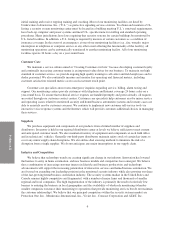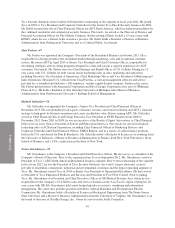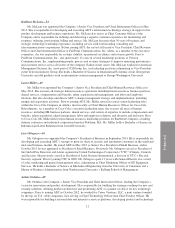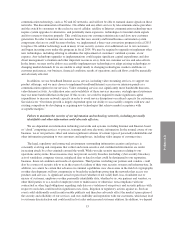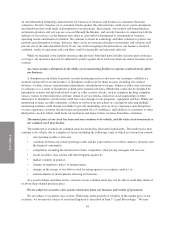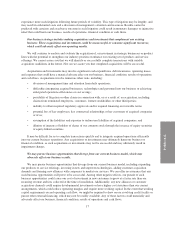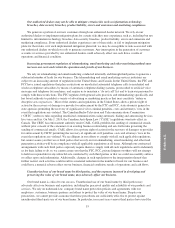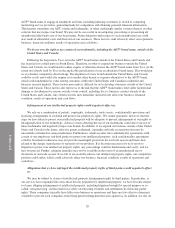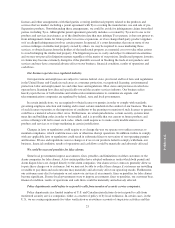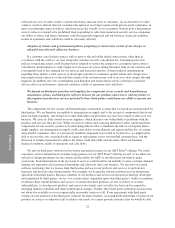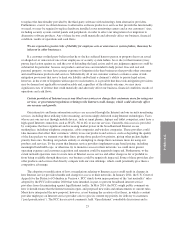ADT 2014 Annual Report Download - page 79
Download and view the complete annual report
Please find page 79 of the 2014 ADT annual report below. You can navigate through the pages in the report by either clicking on the pages listed below, or by using the keyword search tool below to find specific information within the annual report.
FORM 10-K
services of these companies and reduce our market share. Continued pricing pressure from these competitors or
failure to achieve pricing based on the competitive advantages previously identified above could prevent us from
maintaining competitive price points for our products and services resulting in lost customers or in our inability
to attract new customers and have an adverse effect on our business, financial condition, results of operations and
cash flows.
Our future growth is dependent upon our ability to successfully compete with new and existing
competitors by developing or acquiring new technologies that achieve market acceptance with acceptable
margins.
Our business operates in markets that are characterized by rapidly changing technologies, evolving industry
standards and potential new entrants. For example, a number of cable and other telecommunications companies
and large technology companies with home automation solutions are offering interactive security services that
are competitive with our products and services. If these services gain market acceptance and traction, our ability
to grow our business, in particular our ADT Pulse®offering, could be materially and adversely affected.
Accordingly, our future success depends in part on our ability to accomplish the following: identify emerging
technological trends in our target end-markets; develop, acquire and maintain competitive products and services;
enhance our products and services by adding innovative features that differentiate us from our competitors; and
develop or acquire and bring products and services to market quickly and cost-effectively. Our ability to develop
or acquire new products and services that are technologically innovative requires the investment of significant
resources and can affect our competitive position. These acquisitions and development efforts divert resources
from other potential investments in our businesses, and they may not lead to the development of new
commercially successful technologies, products or services on a timely basis. Moreover, as we introduce new
products and services, we may be unable to detect and correct defects in the product or in its installation, which
could result in loss of sales or delays in market acceptance. New or enhanced products and services may not
satisfy consumer preferences and potential product failures may cause consumers to reject our products. As a
result, these products and services may not achieve market acceptance and our brand image could suffer. In
addition, our competitors may introduce superior designs or business strategies, impairing our brand, our ability
to charge a monthly service fee for our products or services and the desirability of our products and services,
which may cause consumers to defer or forego purchases of our products and services. In addition, the markets
for our products and services may not develop or grow as we anticipate. The failure of our technology, products
or services to gain market acceptance, the potential for product defects or the obsolescence of our products and
services could significantly reduce our revenue, increase our operating costs or otherwise adversely affect our
business, financial condition, results of operations or cash flows.
In addition to developing and acquiring new technologies and introducing new offerings, we may need,
from time to time, to phase out outdated and unsuitable technologies and services. If we are unable to do so on a
cost-effective basis, we could experience reduced profits.
Expiration of non-competition agreements, including non-solicit restrictions, could allow the entry of
potential competitors with deep knowledge of our business.
In connection with our Separation from Tyco in 2012, we entered into a Separation and Distribution
Agreement with Tyco, which included (i) non-compete provisions pursuant to which Tyco was prohibited from
competing with us in the residential and small business security markets in the United States and Canada, and
(ii) non-solicitation provisions which prevented Tyco from soliciting our residential and small business
customers in the United States and Canada. These provisions expired on September 29, 2014. Following the
expiration of these restrictions, Tyco is free to compete with us in the residential and small business security
markets in these jurisdictions.
13





